Worldwide cat ownership is increasing in popularity and the proportion of multi-cat households is also on the rise. While being a cat parent brings us lots of joy and many benefits, our cats need assistance to help them get along, keep them safe, relaxed, and enriched.
A cat is an independent, solitary hunter and is not reliant on social relationships. Conflict with their siblings or a new cat can cause significant tension to you and existing house-hold cats. A little bit of extra effort at the start can make the difference between a positive or negative relationship in the future.
In this article, we look at proper introductions and how to help cats live their best life in multi-cat homes using different approaches which can go a long way towards solving potential undesirable behavioural problems.
How To Introduce Cats to One Another?
Did you know that it can be simpler to introduce a dog to a cat than a cat to another cat?! A cat will not see a dog as a competitor for resources. It is also easier and less challenging to introduce a cat to a new kitten than to an adult cat. Kittens’ body language and actions are less intimidating.
Most owners introduce cats by putting them together straight away. Even though some cats adapt easily, the majority have a difficult and stressful time adjusting. There are various recommended methods with certain fundamental principles:
Before You Start the Introductions, Plan Ahead.
Preparation is key! Cats are territorial, setting up your home for more than one cat before arrival will ease the transition for the entire family. Arrange to collect your kitten or cat when you will have lots of time to dedicate to settling it in.
Set up a room that your resident cat does not use lots and one you do not need access much with all the essential resources like food, water, resting areas, and a litter tray. Items should be new or belonging to the new cat, it is NOT recommended to use resident cats’ items since it will smell like the resident cat and make your new cat feel uneasy.
Introduce Your Cats in Stages
Introductions should be completed in several stages. It is crucial the resident cat does not feel threatened or ambushed.
In the First Stage, Give the New Cat Some Space.
Keep the new cat in his/her room for a couple of days to settle to its new environment while checking on him or her from time to time to make sure they are exhibiting normal eating, drinking, grooming, playing, and toileting behaviours.
The Next Stage Involves Visual and Scent Introductions. This Is a Critical Stage.
Cats use their senses of smell to familiarize themselves with new things, including other cats.
Scent is the most important aspect of group recognition in cats. The idea behind scent swapping is that both cats become comfortable in each other’s presence. To do this the owner must introduce items of bedding and toys from the resident cat. The owner then simulates the action of the two cats rubbing against each other and shifting their individual scents to produce a group scent by interchangeably stroking each cat.
The subsequent stage is to familiarise the cats visually (at a distance to begin with) and once fully relaxed through a physical barrier (i.e. baby gate, mesh, glass opening, or small crack in the door) with the aid of food treats (positive association).
Owners should slowly increase the amount of time both cats are in visual contact until they no longer need to be separated. This stage should only take place once both cats are relaxed with seeing each other via a barrier.
Next, remove the barricade while both cats engaged in an enjoyable activity such as play or feeding while supervised. Lastly, free unsupervised access can take place for short periods of time as long as there is no negative or adverse behaviour between both cats.
Don’t Rush—Be Patient!
It is crucial the new kitten or cat is introduced to the resident cat and other family members gradually. Do not rush the introduction process. Be patient and caring.
Always ensure both cats have sufficient space to get away from each other including family members. Be sensitive to the messages the cats are sending each other and you!
Tips To Help Cats Get Along
Whether you’re planning to bring home a new cat or want to keep the peace in your feline family, there are a few tips that will help you to create a harmonious, happy feline household.
1. Avoid Social Conflict
You can avoid social conflict when inviting new cats into your household.
Reduce social conflict frequency and prevent problems between members of the same household by choosing compatible individuals when acquiring cats such as littermates; preferably one female and one male.
Do not add cats to a steady social group and keep an appropriate number of cats to suit the environment.
Avoid intense personalities such as nervous or confident when choosing new kittens or adding to an existing group. Prevent taking numerous cats in tightly cat-populated areas and stay away from feeding stray cats and encouraging them into your home.
Keep in mind queens and their kittens are not always compatible after weaning so think wisely before deciding to keep offspring.
2. Provide Equal Attention
It is vital to provide attention to the resident cat during the transitional phase without exceeding the amount normally accepted. Routines should be kept as normal to demonstrate that the new kitten or adult cat signifies no loss of resources or enjoyment.
Furthermore, stroking regularly both the new cat and your feline companion will enable scent to be incorporated into the communal household.
3. Pheromonal Products May Help.
Pheromone products such as Feliway may improve settling in. Feliway should be used in conjunction with gradual introduction and plugged in both the new cat’s room and the location the resident cat spends most of the time to help create feelings of security and assist the new cat to speed up adaption to the new environment.
Give Each Cat Their Own Designated Territory and Individual Resources.
Provide all resources in this formulation: ‘one per cat plus one’ positioned in different locations to limit rivalry. If there are separate social groups and space is limited than the formulation is: ‘one per social group plus one’.
1. Avoiding Competition for Food and Water
Designate numerous areas within the home as feeding stations to avoid intimidation. Provide several puzzle feeders throughout the house to avoid competition at mealtimes and encourage foraging behaviour.
Water is an important resource; several bowls and water fountains should be placed around the house to encourage drinking. Cats find water appealing if it is located away from food.
2. Creating Private Spaces
Offer high resting places like shelves, vertical cat towers, perched viewing platforms, beds, boxes, and private areas in sufficient numbers where each cat can rest undisturbed. Upright or horizontal Scratching Post should be located near beds, entrances, and feeding stations. Indoor litter facilities must always be provided even if your cat has access outdoors.
3. Toys and Play Can Help Cats Get Along!
If your cats are fighting, you can take several steps to end the conflict.
Ensure your cat has lots of toys to stimulate daily play and predatory behaviour. There is an endless number of toys specific to your cat’s personality.
You should provide toys that are suitable for lone play and toys that you can use to play with your cat. Toys can become boring if they remain motionless in the same spot, hence they should be rotated to prevent your cat from becoming uninterested with them.
Read More: The Best Interactive Cat Toys For Indoor Cats
4. Ensure That Your Cats Always Have an Escape Route.
When cats have to compete for resources like food and water, tensions may give way to fighting and long-lasting stress.
Cats in multi-cat households should have two dispersed entry and exit points such as doors, windows, side entrance, access from the upper floor to lower floor or cat flaps to avoid the risk of defending or obstructing access to timid cats.
5. Lastly, Give Your Cats a Motive to Like Each Other.
When they have settled in and are cohabiting peacefully, offer them highly valued treats to develop positive connotations with each other.
Conclusion
Your wonderful cats may reside with you for many years. Getting the introduction process right from the beginning and taking extra time if needed, can make an enormous difference to their approach to one another and overall wellbeing.
Cat parents will feel much better if their cats get along and your cat will thank you since their stress levels will be reduced substantially.
Cats are fascinating and allowing them to be cats enhances their quality of life and welfare.
Frequently Asked Questions
How long does it take for cats to get along?
Generally (dependant on the cat) the acclimatisation (introduction) period could vary from several days to two weeks.
There is no definitive answer when it comes to building positive long-lasting social relationships, especially if both cats have been attained from different homes or rescues at different life-stages. Cat-to-cat associations are influenced by many factors related to the specific environment and/or the temperament of the individual cat.
How do I get my cat to stop attacking my other cat?
There could be a multitude of causes of feuding felines.
It is important to find the reason or trigger for the aggressive behaviour, since cats are experts at hiding pain. The behaviour change may signal an underlying medical illness or may be a cause of fear-based or redirected aggression.
Social relationships between cats can be fragile.
Even just one incident of aggression can have long-lasting effects on a cat. To restore the peace, it's critical to separate the fighting cats. Giving the cats space will lower stress levels and keep both physically safe.
After a day, start with scent exchange. If this goes well, you can follow with re-introductions in a few days’ time. After they've spent some time in the same space, encourage gentle interactive play. Resist the temptation to overprotect the defensive cat and shout at the attacker.
How do I reintroduce my cats to each other?
There will be times when your cats may need to be reintroduced to one another.
Reasons to reintroduce include inter-cat conflict and aggression, heightened agitation, a stress response to unknown stimuli, hospitalisation, illness, or home relocation.
In most cases, you will need to follow a similar process to the initial introduction phase.
In circumstances of a returning cat from hospitalisation, the cat coming home will need to be set up in a separate area (room or part of the house) with vital resources (bedding, litter trays, scratching post, toys, food & water) for at least 24 hours or even longer.
All the cat’s resources should be set up so he or she do not need to venture out. The other cat/s should not be allowed access to the returning cat. This period allows the confined cat to re-establish a familiar scent through self-grooming, owner stroking, scent swapping, and reintroductions through positive reinforcement with the aid of treats and toys.
This process requires a lot of patience and perseverance to help ensure both cats association can be rebuilt as positively as possible. If the fighting continues between each other after a gradual re-introduction phase, separate both cats and seek veterinary assistance.
-
Care, I. C. (2018, October 08). Introducing an Adult Cat to your Cat. Retrieved May 12, 2020, from International Cat Care: https://icatcare.org/advice/introducing-an-adult-cat-to-your-cat/
-
Care, I. C. (2018, July 30). Multi-cat households. Retrieved May 11, 2020, from International Cat Care: https://icatcare.org/advice/multi-cat-households/
-
Karen Overall, I. R.-D.-M. (2004, December 01). Feline Behaviour Guidelines. (A. A. Practitioners, Compiler) USA. Retrieved April 25, 2020
-
NSW, C. P. (2018). Multi-cat households. Newtown, NSW, Australia: Cat Protection Society. Retrieved May 13, 2020
-
Rodan, I. (2014, May 28). Multi-cat households - when and when not. Madison, WI, USA. Retrieved May 10, 2020
-
Sarah Collins, L. R. (2020, May 01). Feline Focus May 2020. Tisbury, Wiltshire, UK: International Society of Feline Medicine. Retrieved May 11, 2020
-
States, T. H. (2019). Guide to Cat Behaviour Counselling. Washington, DC, USA: The Humane Society Of The United States. Retrieved May 14, 2020
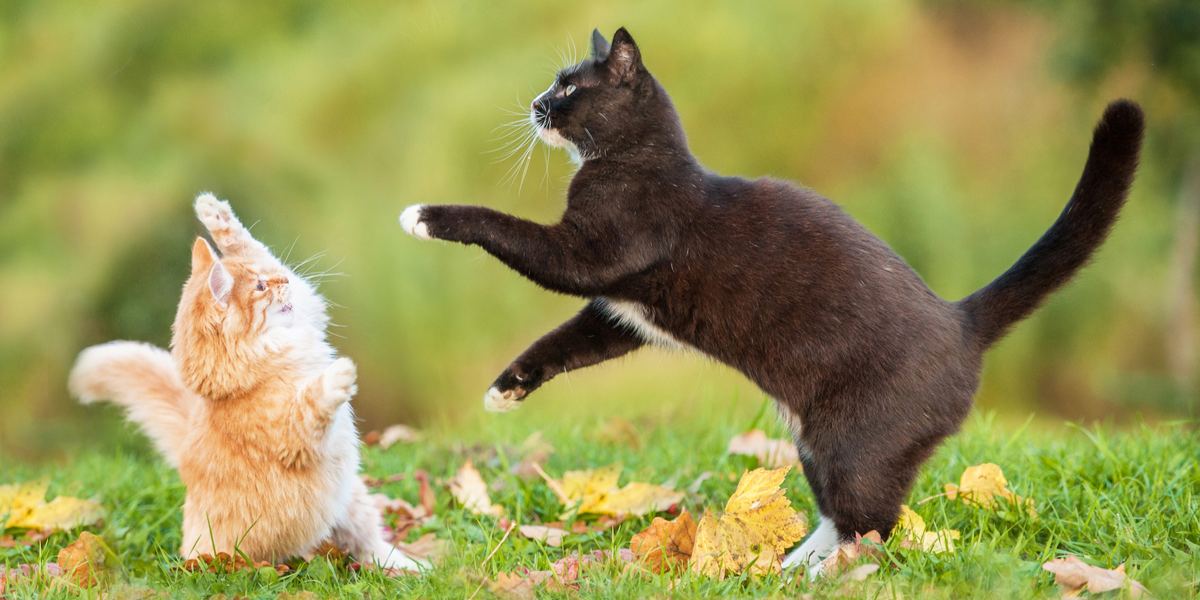
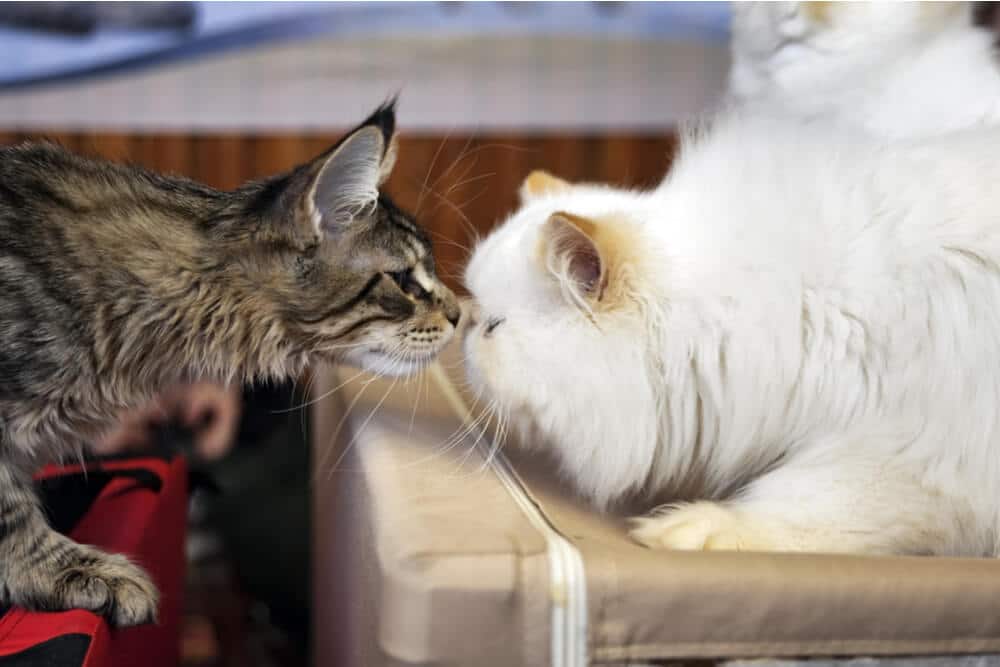
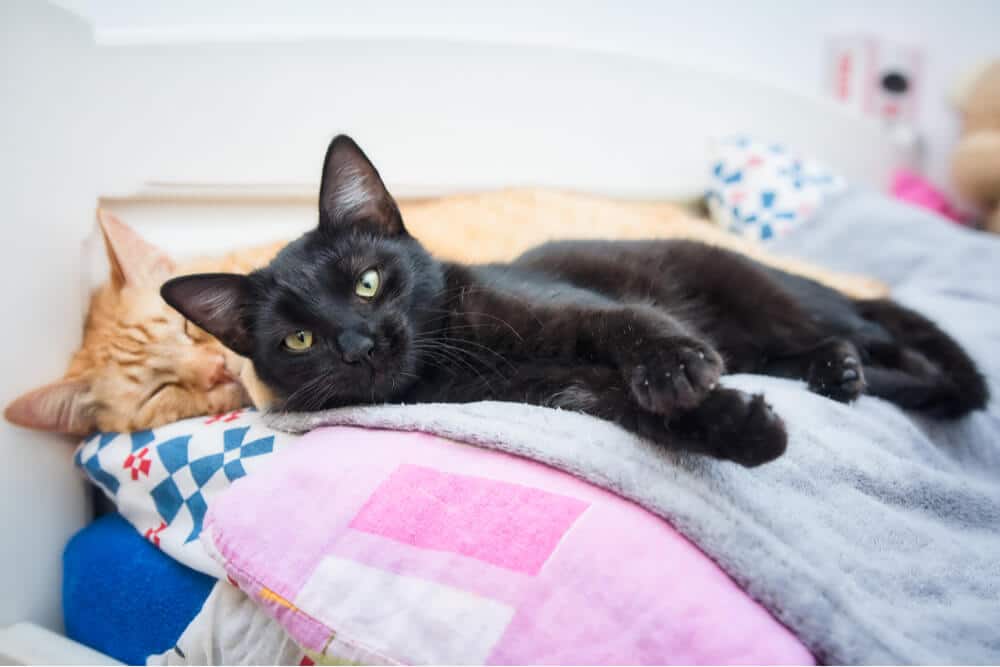

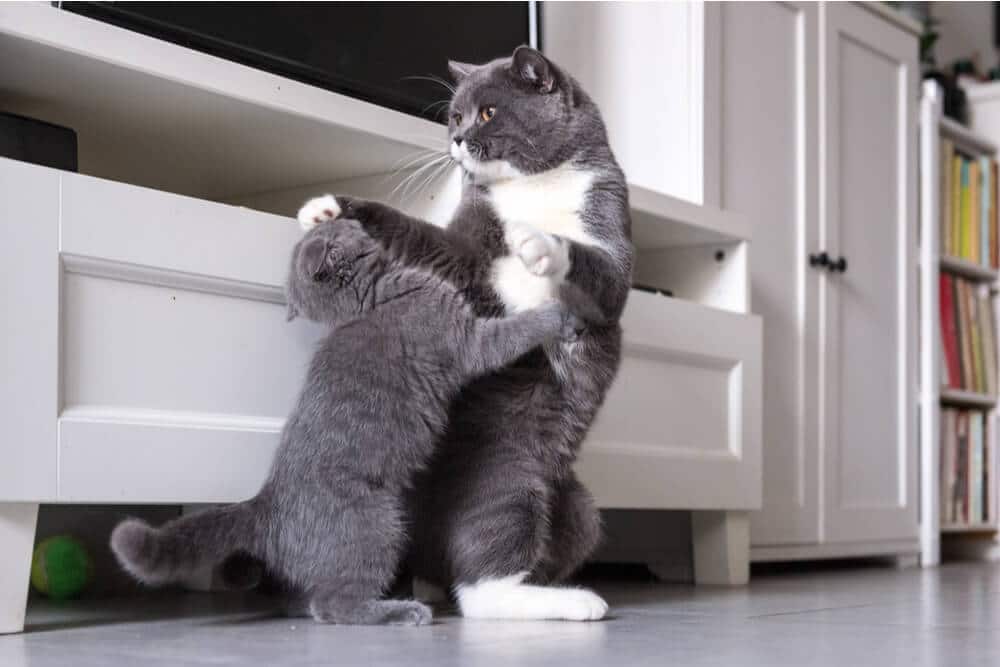

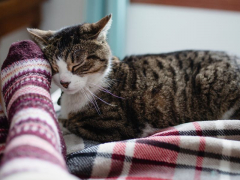
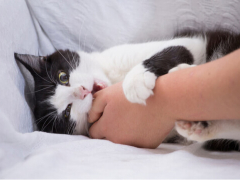

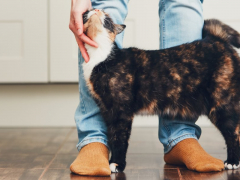
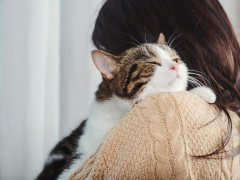


Because scent is so important in introducing a new cat to the household, I use “cat language” by spitting into my palm generously, & rubbing the saliva over the head & face of the new cat so that he or she smells like me on introduction. That way the resident cat doesn’t see the new cat as such an intruder. I haven’t tried doing using saliva on the resident cat as well, but that could also help if the new cat recognizes me already. The best way to talk to a cat is to think like a cat & use their own “language” which is not specifically vocal. We expect our animals to interpret our language, but seldom try to learn theirs! Now, tell me, who’s smarter?!
I suggest mentioning the situation that can develop if a cat in a multi-cat home gets sick. My two are brother/sister and had always been best friends—until suddenly they weren’t. Fighting was a growing problem and was creating chaos until one day the female started to cough uncontrollably.
The vet diagnosed asthma. I had seen nothing to tell me she was sick but her brother knew. Once treatment started I could immediately assess the situation by the behavior of the cats. The male watched closely and when the treatment wasn’t working or was not strong enough the female started hissing at him for following her. I could immediately contact the vet and make the necessary changes in treatment without hauling her off for yet another trip to the vet. Saved me hundreds of dollars, they are best friends again, and I’ll never speak ‘Cat” but it was a good lesson in paying attention.
Thank you for your feedback Maida and for being very observant. Hope both cats are doing much better health wise now. Take care, Melina